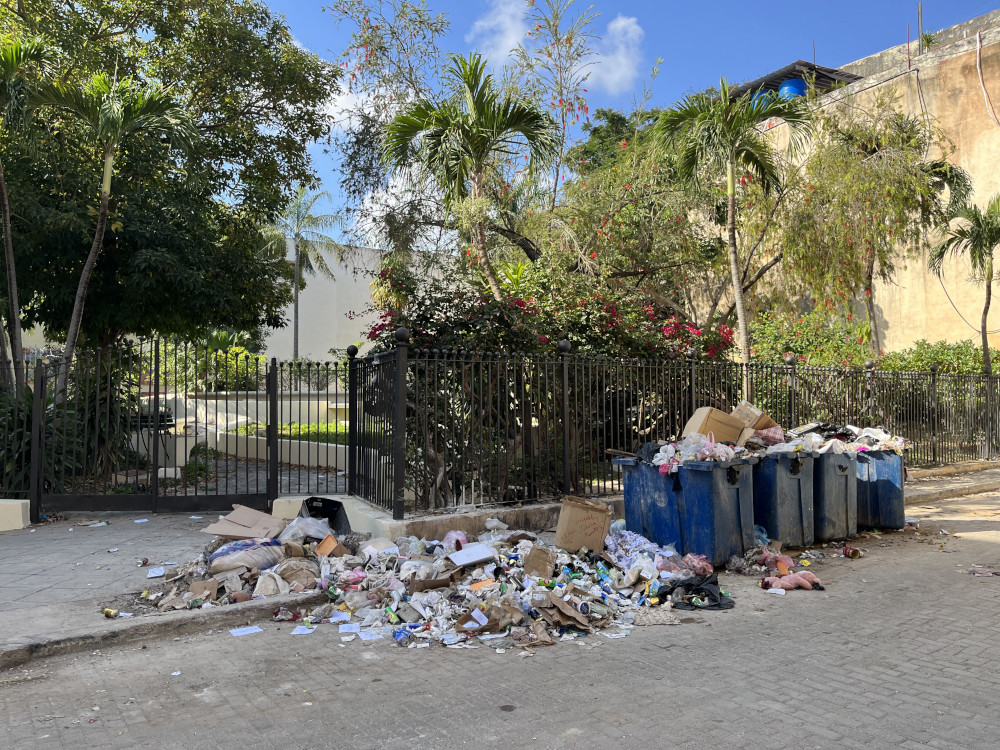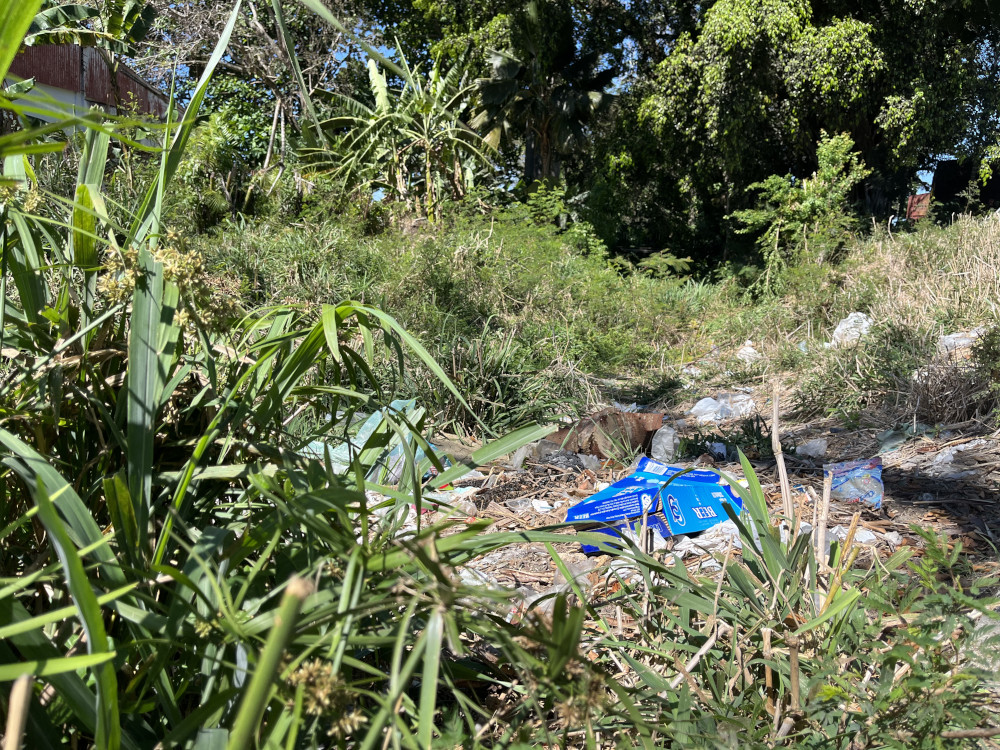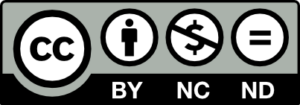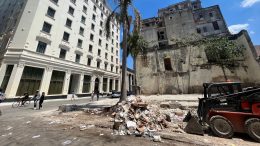Music, cigars, and vintage cars — these are the most common clichés about visiting Havana, Cuba’s capital. They’re all still common sights, but now visitors may also encounter a different scene: mounting garbage in the streets, forest fires, and chemical waste dumped in residential areas.
These are all symptoms of the country’s worst economic crisis in three decades — which started during the COVID-19 pandemic and is now compounded by renewed political pressure from the United States.
On top of the decades-long U.S. embargo, the new Trump administration quickly re-added Cuba to the State Sponsors of Terrorism list. The designation, announced by Secretary of State Marco Rubio in the administration’s first few days, allows for harsh sanctions: trade restrictions, export bans, frozen assets under U.S. jurisdiction, and limited access to international financial markets.
This political label, though aimed at Cuba’s government, severely restricts the entire island’s access to international funding, technology, and scientific collaboration. It also hinders any attempt at a genuine energy transition and makes the protection of Cuba’s rich biodiversity — among the most unique in the Caribbean — increasingly difficult.
Sergio Jorge Pastrana, executive director of the Cuban Academy of Sciences, blames the “mismanagement of solid waste in Havana and other cities” on the policies of the United States government. “Fuel is so scarce that basic environmental services, once a hallmark of Cuba’s public systems, can no longer be sustained,” he says.

On the streets of the country, residents feel a sense of nostalgia for the era of the Obama presidency, when relations between Cuba and the United States started to normalize.
“Back then, there was hope,” says José Mendez, a resident of Havana. “The biggest problem for me is that, since Trump was elected, that hope has vanished. There was a glimmer with Biden, but he’s done very little to ease the pressure on us. Now there’s no prospect for economic or environmental improvement here.”
A Political Tool With Environmental Costs
The State Sponsors of Terrorism list is maintained by the U.S. State Department and includes governments accused of financially, logistically, or politically supporting terrorist groups. As of now, only Cuba, North Korea, Syria, and Iran remain on the list.
The designation carries not only commercial restrictions but also cuts off foreign companies and nongovernmental organizations from operating in the country, for fear of legal complications or reputational damage. It further isolates Cuba diplomatically and reinforces its pariah status on the world stage.
“This list functions more as a tool of geopolitical leverage than an effective mechanism for curbing terrorism,” says Carolina Silva Pedroso, a professor of international relations at the Federal University of São Paulo in Brazil. “It weakens regimes that don’t align with U.S. policy while overlooking allies involved in equally questionable actions.”
Cuba was originally placed on the list in the 1980s for offering medical aid and asylum to groups such as Colombia’s FARC and Spain’s ETA. The country was removed during the Obama–Raúl Castro rapprochement in 2015.
Barack Obama’s presidency tried to normalize bilateral relations between Washington and Havana by easing economic blockade measures, removing Cuba from the list of state sponsors of terrorism, and allowing U.S. cooperation in sectors such as tourism and agronomy — steps that boosted the island’s economy.
The nation’s environment quickly benefited. Between 2015 and 2021, the Cuban government significantly increased its financial commitment to environmental conservation from 534 million pesos ($22.2 million) in 2015 to 2.3 billion pesos in 2021 ($95.8 million) — a more than 330% increase, according to Cuba’s National Office of Statistics and Information.
During this period Cuba’s increased investment in environmental conservation led to several tangible outcomes on the ground — including the launch of coastal wetland restoration programs, the promotion of organic and sustainable agriculture, and the implementation of national strategies to adapt to climate change.
But Trump reinstated Cuba to the terrorism list in his first term — sparking formal protests from the Cuban government.
President Joe Biden’s administration removed Cuba from the list again in the final hours before he left office. But Trump again reversed that decision, making the designation one of the first symbolic acts of his second presidency.
Triple Crisis: Economy, Energy, and Ecosystems
As Cuba struggles with soaring three-digit inflation, widespread rationing of food, fuel, and public services, and a GDP drop of 12% since 2019, its ecosystems are quietly collapsing.
In Santa Marta, a town in the province of Villa Clara where thousands of tourists flock to visit the white beaches of Cayo Santa María, the tension between economic survival and environmental conservation is palpable. According to a Cuban government report, unregulated tourism is degrading coral reefs and mangrove forests in the area.
The once-pristine sands and turquoise waters now coexist with waste and pollution. In 2019 Villa Clara collected 1.9 million cubic meters (67 million square feet) of waste, according to Cuba’s National Office of Statistics and Information. By 2023, the latest data available, the figure dropped to 911,000 cubic meters (32 million square feet) — not because there’s less waste, but because the system can no longer operate properly.
The lack of resources for environmental enforcement and infrastructure makes it difficult to contain deforestation, poaching, and overexploitation of natural resources.
Investment in environmental protection has grown by only 47% since 2021, but hyperinflation — estimated at around 200% over the same period — has severely undermined these efforts. As the cost of living soars, locals increasingly turn to protected areas for income, guiding tourists through fragile ecosystems and hunting during restricted seasons.
Cuba’s biodiversity includes more than 35,000 species, with more than 42% endemism, according to government data — a staggering concentration for an island of its size. According to Cuba’s Institute of Ecology and Systematics and the Ministry of Science, Technology and Environment, numerous endemic species face increasing threats. Among the island’s native flora, 772 species are critically endangered, 512 are endangered, and 396 are classified as vulnerable.
Notably, the zunzuncito (Mellisuga helenae) — the world’s smallest bird — is threatened by habitat loss, while the almiquí (Solenodon cubanus), a rare nocturnal mammal endemic to Cuba, is critically endangered and remains under close study by the IES. Both species are particularly sensitive to habitat disruption and human encroachment.
While the government doesn’t openly admit it, locals told me that deforestation has increased as families cut trees for firewood to escape Cuba’s frequent blackouts.
Forest fires, 95% of which were caused by human activity, also surged by 97% last year, with economic losses estimated at 338 million pesos (about $14 million) according to the Ministry of Agriculture. In Villa Clara, tree planting fell from 1,220 acres in 2019 to just 444 acres in 2023.
“I know many people who clear forests just to be able to cook or start planting something,” says Héctor Muñiz, a resident of Santa Clara. “Illegal fishing and dumping waste … are also increasing. A lot of what we see is simply a result of … the economy.”

Beyond biodiversity, Cuba is also struggling to finance its renewable energy transition. The country’s aging power grid relies heavily on oil-powered thermoelectric plants, which are frequently offline due to lack of fuel.
“Cuba’s goal is to generate 24% of its electricity from renewable sources by 2030,” says Bernardo Pericás, a researcher and author of several books on Cuban politics and economy.
But progress is slow. The U.S. embargo and the terrorism designation make international financing nearly impossible. The amount of energy generated from renewables fell from 1.3 million tons of oil equivalent to just 624,000 over five years, around 15.1 billion kWh to 7.2 million kWh. The number of solar panels installed increased only slightly — from 4,000 per year to 6,000 in the same period, according to ONEI data.
“Paradoxically, for Cuba to become more autonomous and less dependent on external systems, it still needs outside investment,” Pedroso explains. “The current restrictions make that impossible.”

Previously in The Revelator:
What We’ve Lost: The Species Declared Extinct in 2020


